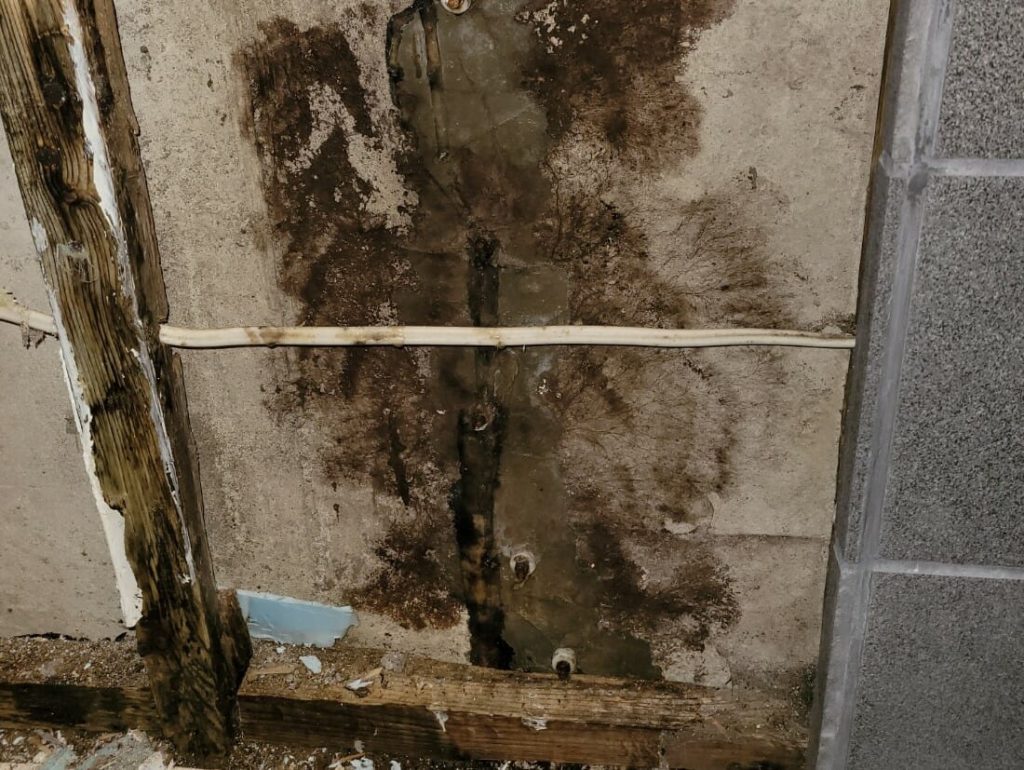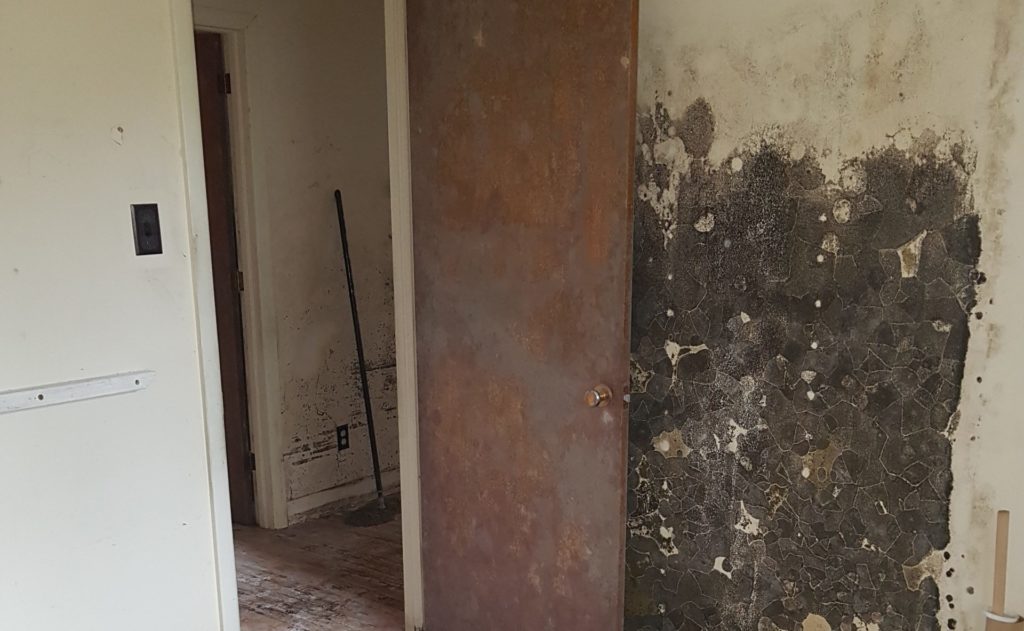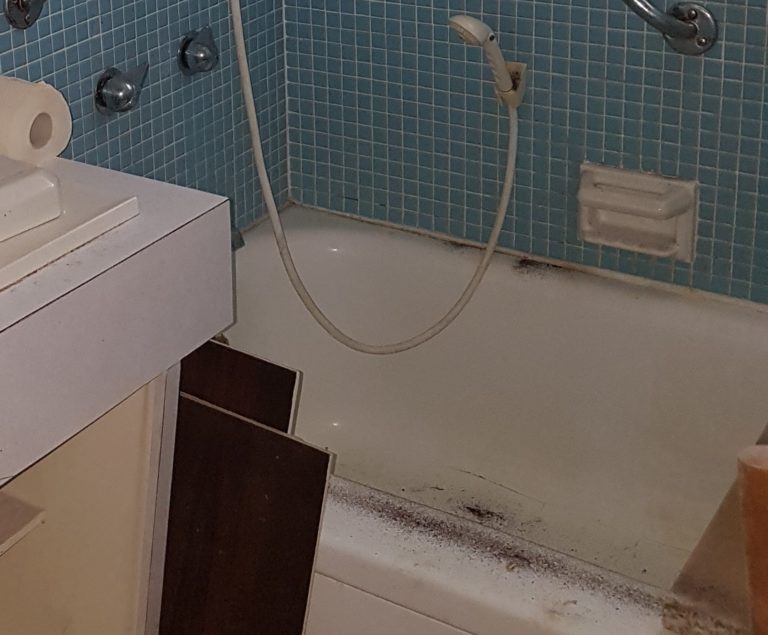Black Mold
Black mold at home: What is it and how to explain it
What is black mold?
From its real name Stachybotrys chartarum, it is better known as black mold. It has a tenacious and pronounced musty smell and a tendency to invite itself indoors which promotes its growth. The National Institute of Public Health of Quebec has identified this particular species of mold as a cause of health problems in Quebec.
Black mold is one of the most dangerous molds found in homes because it generates mycotoxins, which can cause disease in humans. In this article, we will get to know this invader and other similar emitters of unpleasant smelling and potentially dangerous volatile organic compounds.

How fast does black mold grow?
As soon as its spores fall on a moist, fiber-rich substance (eg, fabric, wood, textile, drywall, etc.), the mold begins to grow. It can appear in a house in 24 to 48 hours. It only takes 1-2 days for it to settle on an area of approximately one square inch per day
Unfortunately, sometimes mold becomes a major problem before the homeowner even detects it.
What is the average growth rate of mold on a wall?
Mold grows quickly. On average, it takes 1-2 days for mold to spread from surface to surface.
What is the lifespan of black mold ?
Usually only lasts a few weeks unless it is in a humid environment. They reproduce by means of spores, whose life cycle is about three years.
How does mold grow?
Like other types of mold, black mold particularly likes damp places. It manifests itself most of the time in the bathroom, the kitchen and even in the bedroom. The presence of mold can be caused by various factors, such as water infiltration, condensation or a leak. Mold on a wall can also be due to a lack of ventilation or sunlight. A nutrient source combined with one of the above problems allows mold to grow quickly.
Where can black mold grow ?
Mold can grow anywhere there is a damp surface. The following surfaces are prone to old growth: drywall, paper, flooring, cardboard, insulation, wallpaper, carpeting, furniture, ceiling tiles, dust, and fabrics.
Can mold jump from house to house?
Mold can spread from house to house. Mold spores are present in the air when it begins to grow. If black mold has grown in your neighbors, it can enter your home through open windows and doors. Once mold has entered the home, it settles in damp areas that are exposed to moisture. These colonies of mold are then able to resuspend in the air and be transported to the next house, through open windows or doors.
When black mold is present in your home, cleaning the black mold with bleach will not prevent new mold spores from settling on your furniture. The best way to prevent black mold is to control the humidity in the house.
What is the ideal temperature for mold growth?
Molds can survive in a wide range of temperatures. The minimum temperature needed for mold growth depends on the species of mold, but many species begin to reproduce at or just above room temperature. For black mold, the ideal temperature is 32°C to 38°C (90°F to 100°F). At temperatures found in homes. If mold is present, it develops in 48 to 96 hours.

What are the conditions necessary for the development of black mold?
Molds thrive in the presence of moisture, a food source, and oxygen. Black mold needs an ideal water activity of at least 0.95 to 1.0 for visible growth. Any source of moisture can contribute to the development of mold, including
– Passive condensation
– Plumbing leaks or appliance malfunctions
– Flooding, high humidity and inadequate ventilation
– Plumbing leaks and flooding
– High relative humidity (over 60%)
Some black molds can survive on surfaces as dry as 40% relative humidity.

black mold in bathroom
When someone mentions mold, most people think of blackened dirt at the base of walls or black surfaces in the bathroom. What many don’t know is that this staining often shows up in lighter forms on bathroom surfaces and elsewhere in the home.
Black mold can be black, but it can also appear brown or greenish-black if the black mold is associated with other types of black mold.
It’s important for homeowners to know how black mold can appear in bathrooms to avoid common mistakes that lead to the development of mold, including not cleaning surfaces properly and letting build-up too much humidity.
Keep in mind that when you take a shower, where does the steam go? When you take a bath, where does the water splash go? If you don’t have proper ventilation, all that moisture and water will collect on surfaces like walls, floors, and ceilings, producing mold.
Tubs, sinks, toilets, and windows are all common sources of mold in your home. Mold can be found on walls and joints, behind tiles and toilets, in nooks and crannies, and on carpets. Ignoring the situation will not make it go away. It will only get worse if you don’t do anything to stop it.
So you should hire a professional for a thorough job. Gestion Xpress Démolition is active in the Montreal, Longueuil and Laval regions providing quality service in terms of decontamination and mold treatment in bathrooms, basements, as well as in all other rooms of your home.
What are the most common reasons for mold in bathrooms?
Mold is a type of fungus that needs moisture to survive. The bathroom environment, with its warm temperature and humidity, provides the perfect setting for mold growth. Here are some symptoms of black mold in your bathroom:
1. Black spots on the grout
2. Musty smell
3. Spores growing on the walls or floor
4. Paint is peeling off the walls and your bathroom tiles are losing their shine
5. A slimy film of dark black color in the bathtub, sink or toilet
Signs of dampness can be symptoms of black mold. These can be water leaks from taps, cracks in the foundation or floors, leaky pipes, flooded areas after a storm.
Health problem caused by mold
Health problems caused by mold are well documented, but exposure to black mold can also trigger a physical reaction in some people.
Mold has been found to cause black spots, which can be found on all types of surfaces like wood and furniture, rugs and carpets. People who come into contact with this mold can suffer from exposure to mold in the air, causing black lung, also known as black mold exposure disease or poisoning.
Molds are fungi that release microscopic spores and can be responsible for many health problems. They can be caused in particular by the following symptoms:
- wheezing an coughing
- eye, nose and throat irritation
- runny nose and sinus congestion
- cold-like symptoms
- increased frequency and severity of asthma attacks
- chronic fatigue
headaches and migraines
The elderly, young children, people with weakened immune systems, or who suffer from other health problems, such as asthma, allergies or other respiratory diseases are at greater risk of developing heart problems. health caused by mold.
How to get rid of black mold?
It is not advisable to try to get rid or remove mold on your own. If you don’t take care of it properly, you could release millions of spores and mycotoxins into the air, which can affect your home’s indoor air quality and damage its furnishings.
Since mold is harmful, it is a good idea to hire the services of an expert mold cleaning company.
Mold remediation experts will be able to assess the extent of the problem and suggest the best method for your property. If you detect mold in your home or if you can already smell or see it, contact Gestion Xpress Démolition now.
